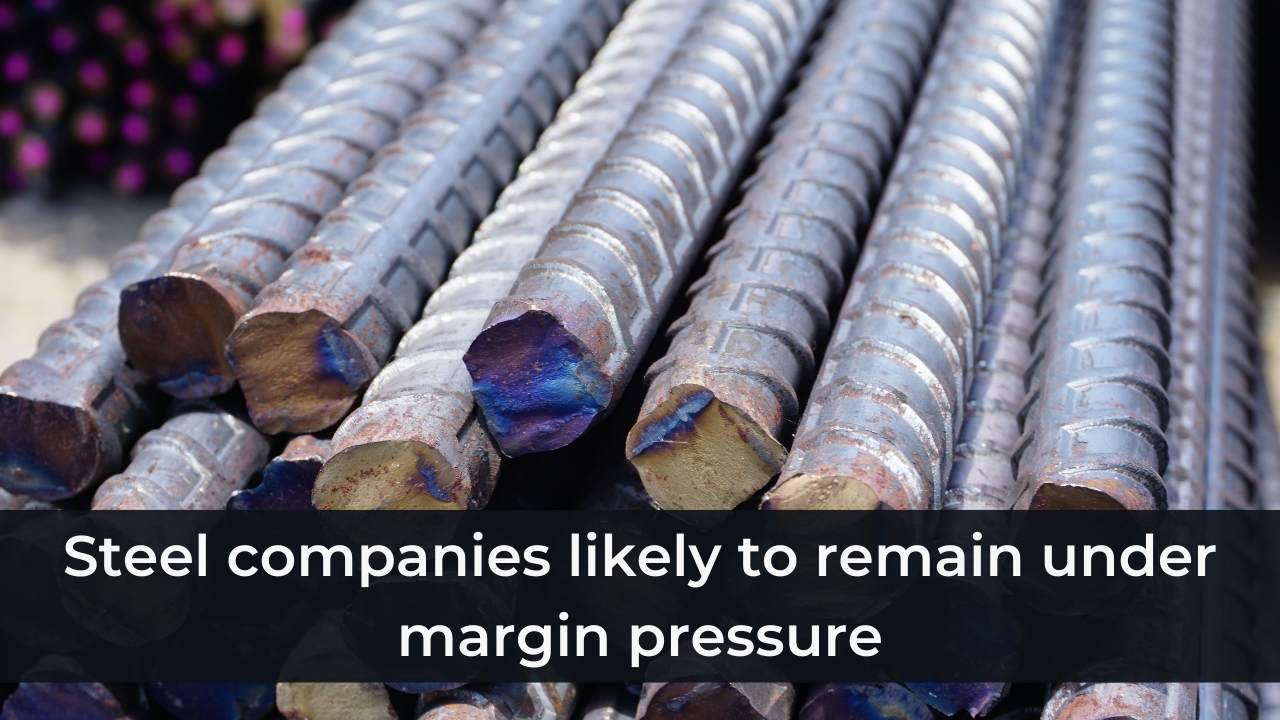Sobha Share Price Dips Amidst ₹865 Crore Equity Trade
Steel companies likely to remain under margin pressure

Last Updated: 12th December 2022 - 12:41 pm
Even so, near-term weakness in domestic steel prices cannot be ruled out absent a material improvement in global demand.
China, the world's largest consumer of metals, has seen its demand shaken by policy-induced lockdowns and real estate slowdowns. However, it is difficult to see how China's demand-supply balance could deteriorate further from here. Support could come from emerging from Chinese lockdowns, stimulus funding, and production reductions. At these levels, Chinese HRC margins have historically reached their cyclical lows.
FY2023 Outlook:
Due to seasonality's impact and the sharp decline in steel prices following the imposition of export duties on May 22, Q2FY23 is predicted to have weak margins. Coking coal costs, which began to decline at the end of May, will provide some relief because they will take time to appear in the financials. In comparison to this backlog, Q3 should perform better.
However, since input costs started creeping up again after a brief period of softening, this necessitates closer monitoring. Coking coal prices decreased from their highs of $ 506.5 per tonne in May to $ 196 per tonne in early August.
The price did, however, rise by 34% in the previous two weeks to $ 263 per tonne. Because of the ongoing energy crisis in Europe, thermal coal prices are stable, and coking coal replacement demand is increasing.
Iron ore, another important raw material, has seen an increase in price. After a series of price cuts, NMDC Ltd, India's main iron ore supplier, increased prices by Rs. 100–200 per tonne. Prices for lump ore and fines are Rs. 4100 and Rs. 2910 per tonne as of August 11th, respectively. Prices at NMDC are significantly below import parity, so further declines are unlikely.
Based on spot spreads, the expectation of a margin recovery in H2 FY23E appears irrational because prices face downside risk and costs face upward risk. Steel prices are likely to stay low given the impending margin contraction and the hazy outlook for steel prices.
The Bright side of the story:
Compared to their respective 52-week highs, the share prices of steel companies are currently down 17 to 32%. The sharp decline in share prices has the advantage of making valuations less strict.
Since this is a significant overhang, the elimination of the steel export duty would have a positive sentimental effect on stock prices. However, it's unclear if volume growth will be exceptional given the weak global demand.
Disclaimer: Investment/Trading is subject to market risk, past performance doesn’t guarantee future performance. The risk of trading/investment loss in securities markets can be substantial. Also, the above report is compiled from data available on public platforms.
Trending on 5paisa
Discover more of what matters to you.
Indian Market Related Articles
 Tanushree Jaiswal
Tanushree Jaiswal




